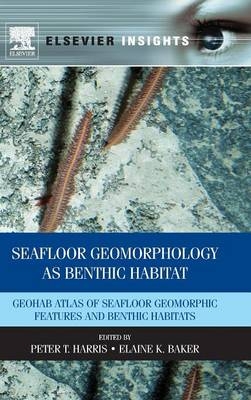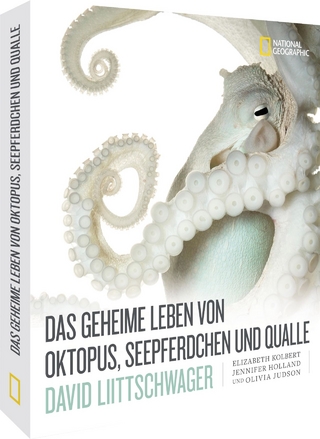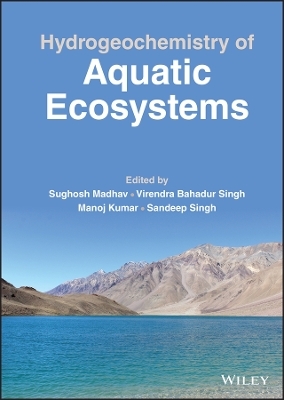
Seafloor Geomorphology as Benthic Habitat
Elsevier Science Publishing Co Inc (Verlag)
978-0-12-385140-6 (ISBN)
- Titel erscheint in neuer Auflage
- Artikel merken
The conservation of marine benthic biodiversity is a recognised goal of a number of national and international programs such as the United Nations Convention on Biodiversity (CBD). In order to attain this goal, information is needed about the distribution of life in the ocean so that spatial conservation measures such as marine protected areas (MPAs) can be designed to maximise protection within boundaries of acceptable dimensions. Ideally, a map would be produced that showed the distribution of benthic biodiversity to enable the efficient design of MPAs. The dilemma is that such maps do not exist for most areas and it is not possible at present to predict the spatial distribution of all marine life using the sparse biological information currently available.
Knowledge of the geomorphology and biogeography of the seafloor has improved markedly over the past 10 years. Using multibeam sonar, the benthic ecology of submarine features such as fjords, sand banks, coral reefs, seamounts, canyons, mud volcanoes and spreading ridges has been revealed in unprecedented detail.
This book provides a synthesis of seabed geomorphology and benthic habitats based on the most recent, up-to-date information. Introductory chapters explain the drivers that underpin the need for benthic habitat maps, including threats to ocean health, the habitat mapping approach based on principles of biogeography and benthic ecology and seabed (geomorphic) classification schemes. Case studies from around the world are then presented. They represent a range of seabed features where detailed bathymetric maps have been combined with seabed video and sampling to yield an integrated picture of the benthic communities that are associated with different types of benthic habitat. The final chapter examines critical knowledge gaps and future directions for benthic habitat mapping research.
I joined GRID-Arendal as Managing Director in 2014. I am a native of the USA, citizen of Australia and resident of Norway; I describe myself as a “professional foreigner. I am a graduate of the University of Washington (Seattle USA), completed a PhD at the University of Wales (Swansea UK), married an Australian and have 3 children. I have worked in the field of marine geology and science management for over 30 years and published over 100 scientific papers. I taught marine geology at the University of Sydney and conducted research on UK estuaries, the Great Barrier Reef, the Fly River Delta (Papua New Guinea) and Antarctica. I worked for 20 years for Australia’s national geoscience agency as a scientist and manager. In 2009 I was appointed a member of the group of experts for the United Nations World Ocean Assessment. Apart from managing all of GRID-Arendal’s amazing activities, my interests include new methods for the conduct of environmental assessments (the expert elicitation method) and the use of multivariate statistics and geomorphology to provide tools to manage the global ocean environment. I also enjoy sailing and playing the bagpipes. Elaine holds the inaugural UNESCO Chair in Marine Science at the University of Sydney and is the Director of the University's Marine Studies Institute. Professor Baker is also the Director of the GRID-Arendal office (an official collaborating centre of UNEP) at the University. Elaine is interested in making real world impact – taking the ideas and inspiration of the university beyond academia to help solve some of our biggest problems. She has worked on developing policy recommendations to deal with the growing burden of waste, how to make waste-water pay its own way, how to change the face of mining so it includes people and the planet alongside profit and why our coastal ecosystems are worth more alive than dead. Over the last 10 years Elaine has been working with partners in Australia and Norway on a project that is redrawing the map of the world – to date assisting more than 60 developing coastal states in their efforts to prepare submissions to the United Nations, for what is known as extended continental shelf. This process, when complete, will establish the outer limits of marine jurisdiction for eligible coastal states, helping to finalise global maritime boundaries. A recent milestone in the project was the joint submission for extended continental shelf made by seven West African coastal states. Mauritania, Senegal, The Gambia, Guinea Bissau, Guinea, Cabo Verde and Sierra Leone joined together in an historic collaboration, to make a single submission for a large area of marine territory. In the Pacific Professor Baker is a co-founder of the Pacific Maritime Boundaries collaboration, which includes the University of Sydney, GRID- Arendal, SOPAC/SPC, Geoscience Australia, the Pacific Forum Fisheries Association, the Australian Attorney Generals Department, the Commonwealth Secretariat and 14 Pacific Islands States. Since 2008 scientific, technical and diplomatic personnel have been meeting twice a year at the University to prepare claims for extended continental shelf under article 76 of the United Nations Convention on the Law of the Sea and more recently to negotiate and prepare national legislation for shared maritime boundaries. The boundaries projects, known collectively as the Shelf Programme, is building on these successes to develop other initiatives that support sustainable livilihoods along side good ocean governance.
Part 1: Introduction
Marine conservation and biodiversity Marine Protected Areas Threats to marine ecosystems Biogeography and benthic ecology Seabed Geomorphology – coast, shelf, and ocean basins Biophysical variables and surrogacy research
Part 2: Case studies
Coastal habitats Fjords Estuaries Kelp and seagrass beds Shelf habitats Coral Reefs Rocky banks Sand banks and sand waves Oceanic habitats Seamounts Submarine canyons Deep sea plateaus and banks Hydrothermal vents
Part 3: Critical knowledge gaps and future directions
| Erscheint lt. Verlag | 23.11.2011 |
|---|---|
| Sprache | englisch |
| Maße | 152 x 229 mm |
| Gewicht | 1560 g |
| Themenwelt | Naturwissenschaften ► Biologie ► Limnologie / Meeresbiologie |
| Naturwissenschaften ► Geowissenschaften ► Geologie | |
| Naturwissenschaften ► Geowissenschaften ► Hydrologie / Ozeanografie | |
| ISBN-10 | 0-12-385140-8 / 0123851408 |
| ISBN-13 | 978-0-12-385140-6 / 9780123851406 |
| Zustand | Neuware |
| Haben Sie eine Frage zum Produkt? |
aus dem Bereich


